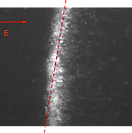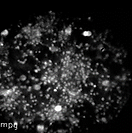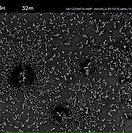
Statistical, Nonlinear and Bio Physics Research Group
Research group of Prof. Pik-Yin Lai (黎璧賢 )
Nonlinear Physics, Statistical Physics; Biophysics, Soft-matter
Our research themes focus on several frontier topics in biological and soft-matter systems that are related to the nonlinear and non-equilibrium nature of complex interacting systems, both experimental and theoretical approaches are used.

Non-equilibrium Statistical Physics & Soft-matter
Unlike equilibrium systems in which there is a minimization free energy principle to obey, non-equilibrium statistical physics often lack of laws and principles to describe the systems quantitatively. However, due to the breakthrough in non-equilibrium statistical physics in the last two decades, mainly because of the discovery of Fluctuation Theorems, we are now in a position to investigate the nature in various non-equilibrium systems and obtain fundamental understanding of these systems quantitatively that was never possible before. Yet we are still far from a complete theory nor a thorough understanding of non-equilibrium physics. For example, although it is expected Fluctuation-dissipation relations, such as the Stoke-Einstein relation to breakdown in nonequilibrium system, to what extend is this relation is violated, and can it be at all be quantified or described precisely?
Soft-matter system under external forcing, such as driven colloidal system, polymer solution under flow, or granular particles under vibration are convenient experimentally realizable systems that can serve as paradigm cases for probing the basic principles in non-equililbrium physics.
See the recent popular science article in Physics Bimonthly:

Complex and Biological Networks
Many systems of interest in physics, biology or social science are multi-component with the different components interacting with each other. One of the ultimate goals in bridging experimental data and theoretical understanding in a multi-component interacting complex system is trying to answer the following question: “Which entities are interacting with each other and what are the associated coupling strengths?” The answers to these questions can provide significant insights and understanding of the fundamental mechanism behind the overall behavior of the systems. Examples include gene expression data for gene regulatory networks, multi-electrode array measurements for neuronal networks, functional MRI measurements for the brain network, disease infection network, financial time-series, power grid networks, communication networks and social networks. We intend to develop novel methods that can provide answers to these questions for complex interaction multi-component systems. Furthermore we will apply to various important unsolved problems in neuronal development, brain science, and real-time feedback control in complex interacting systems.

Cardiac Dynamics, control of Arrhythmia and complex dynamics
Cardiac alternans can be induced if the external periodic pacing period T is sufficiently small, then the periodic beating of the heart will lose its stability and gives way to period-2 oscillations resulting in alternating of long and short APDs and hence in strong and weak alternate contraction of the heart. Alternans response in cardiac tissue during fast pacing can lead to conduction block, causing fatal cardiac failure. Recently, we proposed a novel method that exploit a different mechanism of pacing with feedback control to suppress the alternans and therefore the conduction block and thus reduce the subsequent risk of cardiac fibrillations. Our novel method can dramatically reduce the magnitude of alternans in cardiac oscillation, we generalize the idea to general nonlinear dynamical systems aiming to control complex periodic dynamics and chaos by feedback control using small perturbations with fixed magnitude. This opens a new avenue to a more thorough understanding of the fundamentals in nonlinear dynamical systems.

Mathematical Biology:
Neuro-dynamics & nonlinear biophysics
In many multi-component biological interacting systems, the elementary entities interact with each other giving rise to emergent properties that often bears important biological function. Briain function or Neuronal networks are such examples that have been the major concern in neuroscience. Using mathematical mehtods and modeling, we investigate the dynamical properties of relaistic neuronal networks in cell cultures, in relation to short-term or working memory and logn-term plasticity/memory. This is a combined theoretical and experimental efforts with experiments performed using Multi-electro Array, electrophysiology, and Calcium imaging.
In a different direction, we are interested in systems with entities/cells interacting via mediating signaling chemicals. Signal communications are common in various inter and intra-cellular processes for make important biological decisions such as in quorum sensing. Signal communications between different regions in space through the diffusion of particular chemicals are common in various inter and intra-cellular processes for make important biological decisions. The resulting decision making often gives rise to a change in dynamical behavior, which can be described in terms of partial differential equations. For example in the case of quorum sensing in which the change in the cooperative behavior of a collection of cells occurs in response to the change in their population size or density by the secretion of certain chemicals from individual cell.